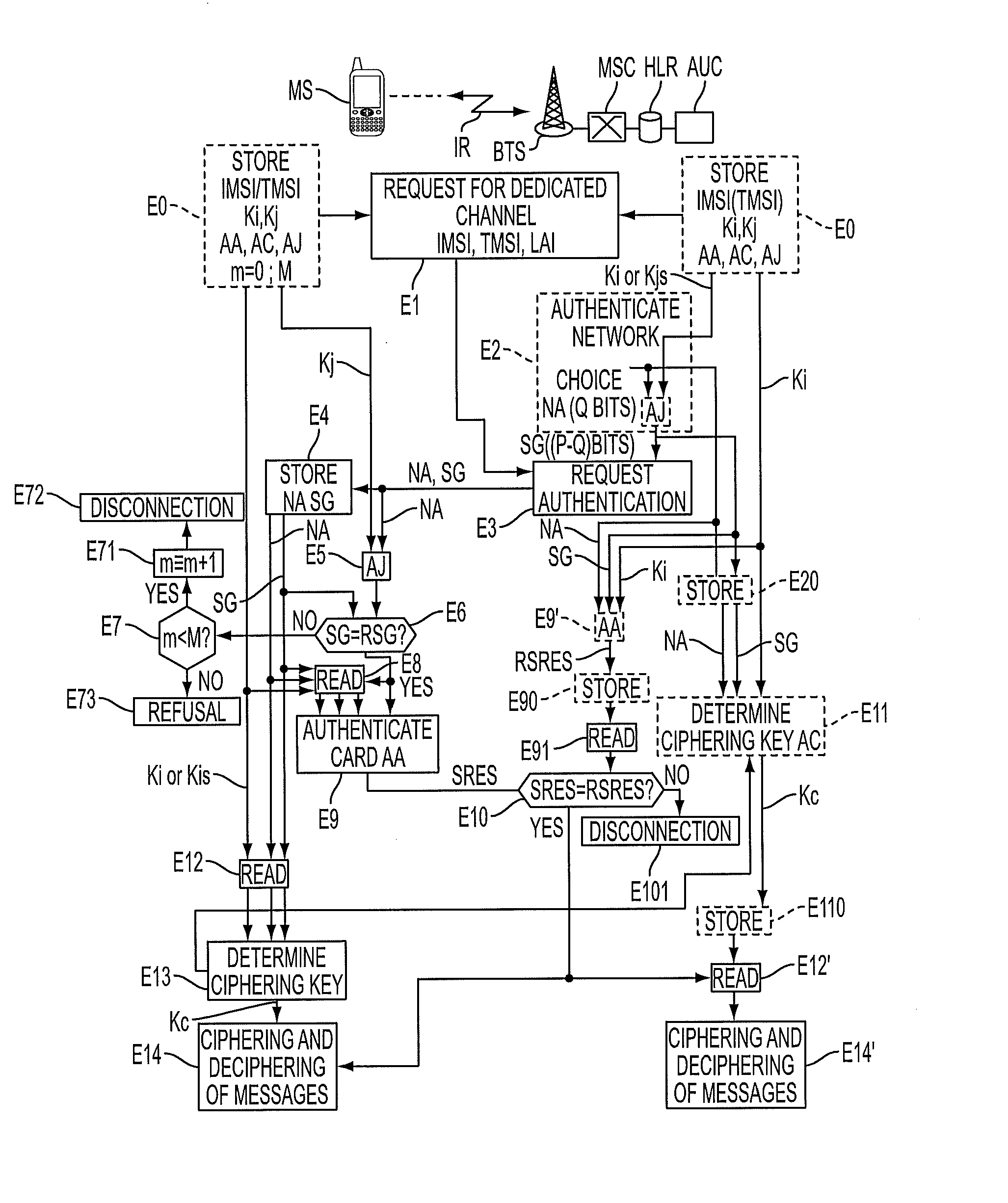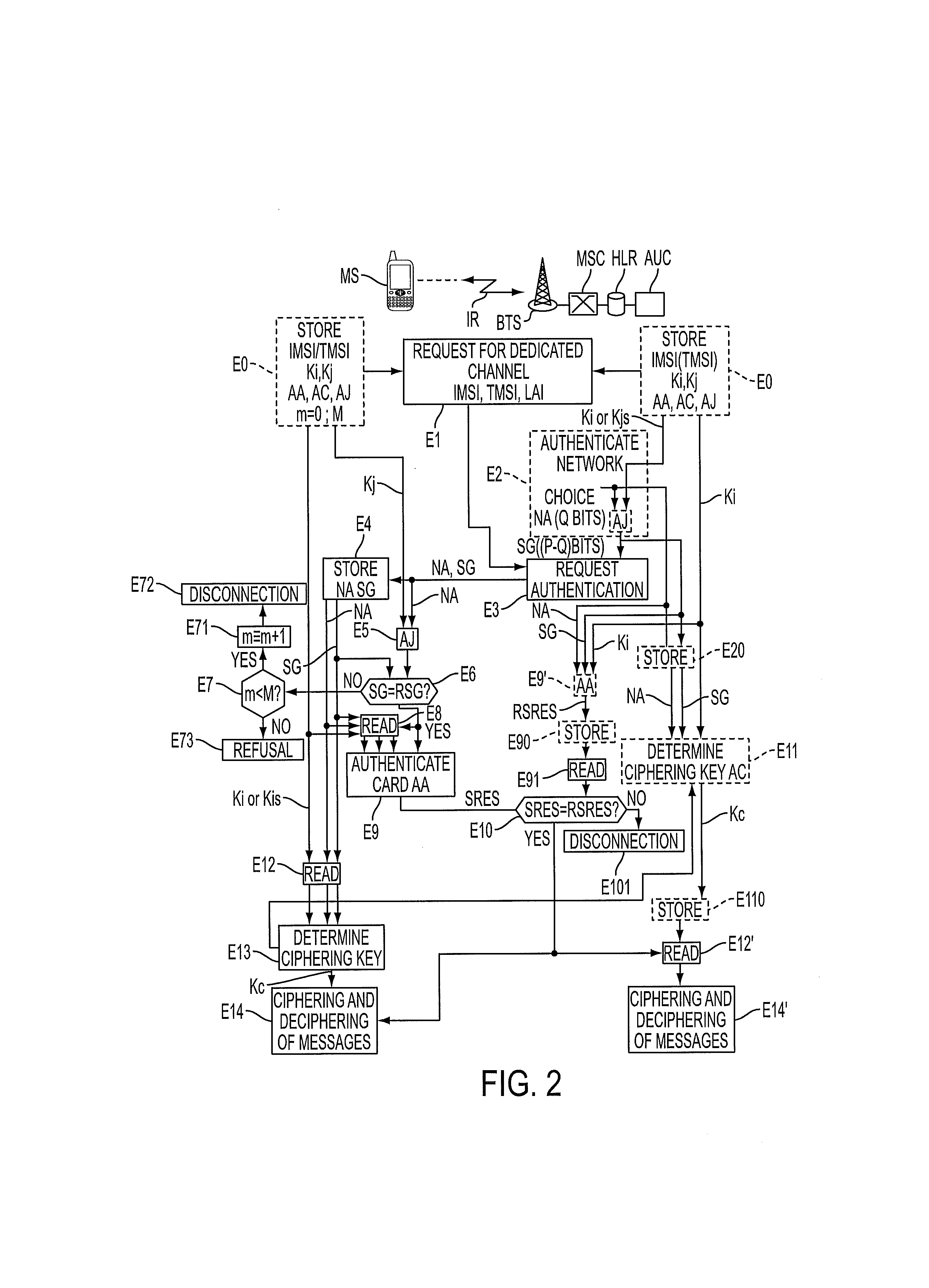Authentication in a radiotelephony network
a radiotelephony network and authentication technology, applied in the field of authentication methods, can solve the problems of inability of attackers to forge responses, inability of sim cards to authenticate fixed networks, and difficulty for attackers, so as to improve the security of authentication in radiotelephony networks, reduce the difficulty of attackers, and discourage many attackers.
- Summary
- Abstract
- Description
- Claims
- Application Information
AI Technical Summary
Benefits of technology
Problems solved by technology
Method used
Image
Examples
Embodiment Construction
[0038]The method of the invention is described below in the context of the radio telephony network RR of the GSM type, already presented with reference to FIG. 1, which undergoes only software modifications and additions essentially in the authentication center AUC as well as in the SIM cards of the mobile terminals.
[0039]In the following description, a fixed network is considered to be the chain of entities attached to the mobile radiotelephony terminal under consideration MS from the radio interface IR, comprising the base station BTS, the station controller BSC, the switch MSC with the visitor location recorder VLR, and the pair HLR-AUC.
[0040]It should be stated that a mobile radiotelephony terminal MS of a subscriber comprises a removable microprocessor module, referred to as a SIM chip card connected to a bus of the digital circuit with a microprocessor in the terminal, the bus serving the keyboard, screen and peripheral sockets of the mobile terminal. As shown in FIG. 1, the S...
PUM
 Login to View More
Login to View More Abstract
Description
Claims
Application Information
 Login to View More
Login to View More - R&D
- Intellectual Property
- Life Sciences
- Materials
- Tech Scout
- Unparalleled Data Quality
- Higher Quality Content
- 60% Fewer Hallucinations
Browse by: Latest US Patents, China's latest patents, Technical Efficacy Thesaurus, Application Domain, Technology Topic, Popular Technical Reports.
© 2025 PatSnap. All rights reserved.Legal|Privacy policy|Modern Slavery Act Transparency Statement|Sitemap|About US| Contact US: help@patsnap.com



